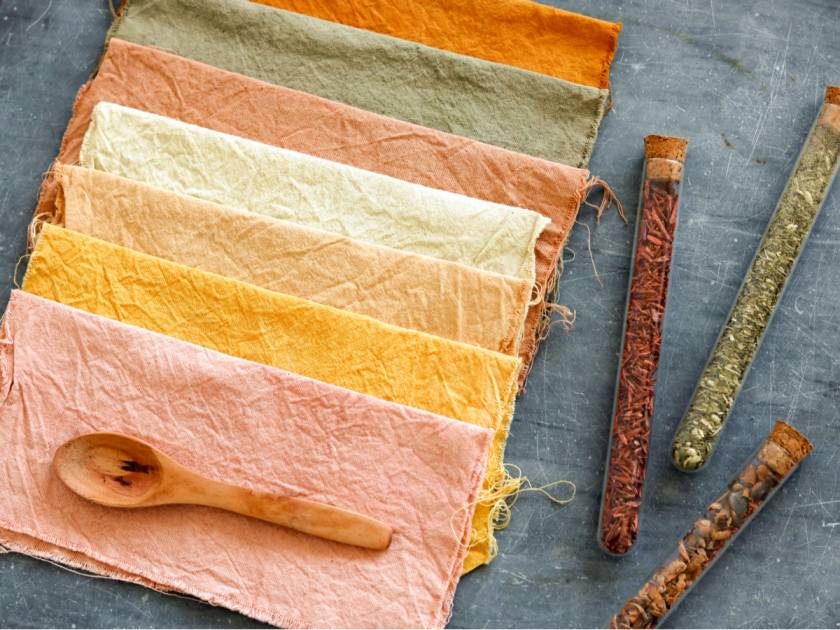Organic fabric dyes: Safe eco-friendly alternatives for synthetic dyes



Throughout history, people have dyed their textiles using naturally available dyes that induce vibrant long-lasting colors to fabrics. Three main sources of such natural and organic dyes are plants, invertebrates, and minerals. One of the chief allegations against the apparel industry today is related to pollution and chemical dyes are a primary contributor to the problem. One effective way to address the problem would be to increase the use of natural dyes which are environment friendly, have no health hazards, and generate no non-biodegradable waste. It can be argued that natural dyes fade easily or are difficult to bind, but when appropriate dyeing procedures are employed, these issues can be minimized. Considering the benefits of natural dyes and the needs of the hour, our industry could certainly consider the switch.
Turmeric

Turmeric is one of the oldest natural dyes used on fabric and it yields a bright golden-yellow color. The coloring ingredient present in turmeric is called curcumin and it is the root of the turmeric plant that is used for dying. The roots are crushed and reduced to a powdery form before they are boiled in hot water to form the dye. Fabrics like cotton, silk, and wool can be dyed using this organic plant-based dye but it requires to be combined with a mordant for a lasting effect.
Henna

Henna is a natural dye with varied applications. The earliest usage of henna can be traced back to Egypt about 9000 years ago. Not only is henna used to dye clothes but it is also popularly used as a dye for human hair and skin, which goes to show it is highly safe for dyeing clothes for people of all ages. The dye is derived by drying and crushing the leaves of the henna plant, and the resultant colors might range from mustard yellow to brown. Henna can be a good alternative to synthetic disperse dyes because it works great on polyester and nylon. It can also be used on silk or wool when aiming for a light shade of brown.
Indigo

For centuries, indigo has been commercially produced for dyeing fabrics in different parts of the world and especially in Asia. The dye is extracted from the seeds of indigo plants and the color that it produces is royal blue. The plants are first soaked into water for fermentation and once the hydrolysis of glucoside is over, the plant residues are removed from the liquid. The solution is then aerated to convert the indoxyl to indigotin, which eventually become the precipitate. Indigo works well with natural cellulose fibers present in cotton, viscose, and linen but can also be used to dye wool or synthetic fibers.
Cochineal

Cochineal is a dye derived from a scaled insect bearing the same name which contains a natural colorant called carmine in its body. It can be used as an organic dye for fibers such as silk, cotton, and wool to obtain colors like crimson or shades of pink. When iron, copper, or chromium are used as mordants, more shades in the range of purple to gray can be derived using the dye.
Malachite

Malachite is an organic compound used to dye silk, wool, and leather. Even though it is named after the mineral malachite owing to its color, it is not derived from it. It is an organic chloride salt and the color it produces it a dark shade of blue-green. This, like all the others mentioned above, is a safer alternative for the chemical dyes which pollute water bodies and cause harmful impact on people who work with them.



















